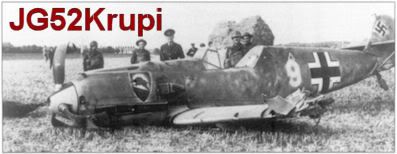
 |
|
|
|
#1
|
|||
|
|||
|
Keep it real...that's the point.
|
|
#2
|
|||
|
|||
|
Keep it real, or preferably make it a difficulty option.
|
|
#3
|
|||
|
|||
|
Well, the tacho movement was overdone (It's not a pressure-dependant instrument after all), so I guess this one should be reworked. The other instruments? Maybe, I'm not qualified enough to say, however...
Giving the choice is usually the best solution. Make shaky instruments one of difficulty options and all users are happy to choose what's comfortable for them. |
|
#4
|
|||
|
|||
|
+1
|
|
#5
|
|||
|
|||
|
Quote:
Quote from an actual pilot: "I have the privilege of flying and displaying Hurricane Mk1, [serial deleted]. It will not surprise you to know that in deference to it's age and historical importance we do not fly the aircraft as aggressively as it would have been flown during combat. Particularly, we avoid negative g so I am not well placed to answer your question specifically. However, I can give you some clues. First, I can tell you that it does not require negative g to make the engine suffer from a shortage of fuel supply; a significant reduction of g down to, say, 0.3g can be enough to make the engine misfire. This can be experienced towards the top of a wing-over but I would estimate that the reduction in g needs to be maintained for 2 seconds or more before there are any effects. Undoubtedly, if the reduction in g was greater (to less than zero g) and particularly if the bunt was abrupt then the effect could be instantaneous. I have never, though, experienced any misfiring in turbulence; albeit, were the turbulence severe enough to produce g spikes to less than zero g, I would not rule out the possibility of the odd cough from the engine. Of interest to you I am sure is that on recovery from an episode of fuel starvation the engine recovers through a short period of over-richness shown by, I would estimate, up to a second of black, sooty exhaust before normal combustion is resumed. Good luck with your simulation." This is a change will provide a more accurate reflection of the real aircraft. Last edited by *Buzzsaw*; 04-15-2011 at 05:25 PM. |
|
#6
|
||||
|
||||
 KEEP IT REAL |
|
#7
|
||||
|
||||
|
Quote:
__________________
 Gigabyte X58A-UD5 | Intel i7 930 | Corsair H70 | ATI 5970 | 6GB Kingston DDR3 | Intel 160GB G2 | Win 7 Ultimate 64 Bit |
MONITOR: Acer S243HL. CASE: Thermaltake LEVEL 10. INPUTS: KG13 Warthog, Saitek Pedals, Track IR 4. |
|
#8
|
|||
|
|||
|
Quote:
|
|
#9
|
|||
|
|||
|
Can't say I've ever flown a plane, let alone a Spitfire. But I have to agree with people here. The neg G thing has been tweaked too far.
Like anything, practice and you'll improve. Seem's to be no choke point now and just cut-out. Doesn't feel the same, and the Spit has lost character for me. Not too fussed about how needles move on dials, as long as they are generally giving a correct reading. But, change the characteristics of the Spit back! |
|
#10
|
||||
|
||||
|
+1 .........carefull what you wish for in the future eh.
|
 |
|
|